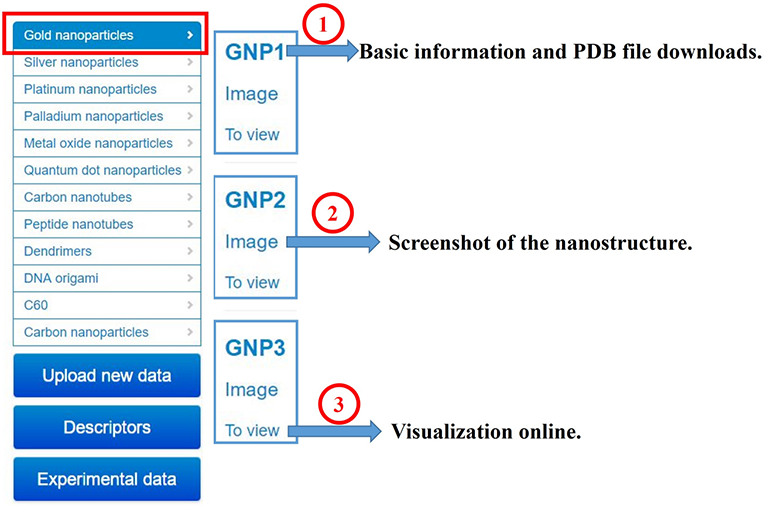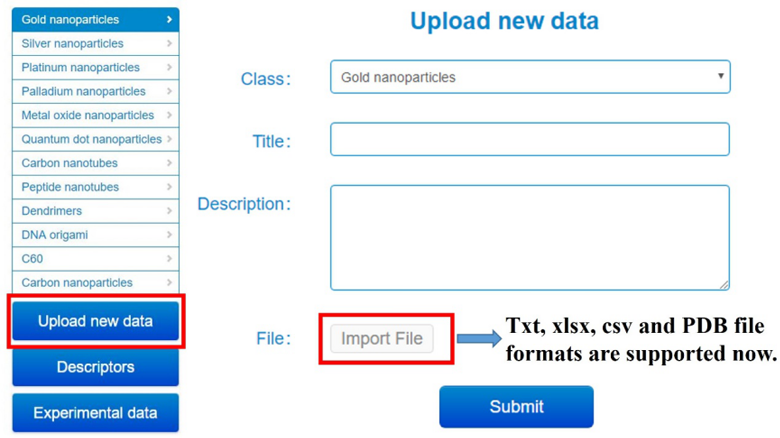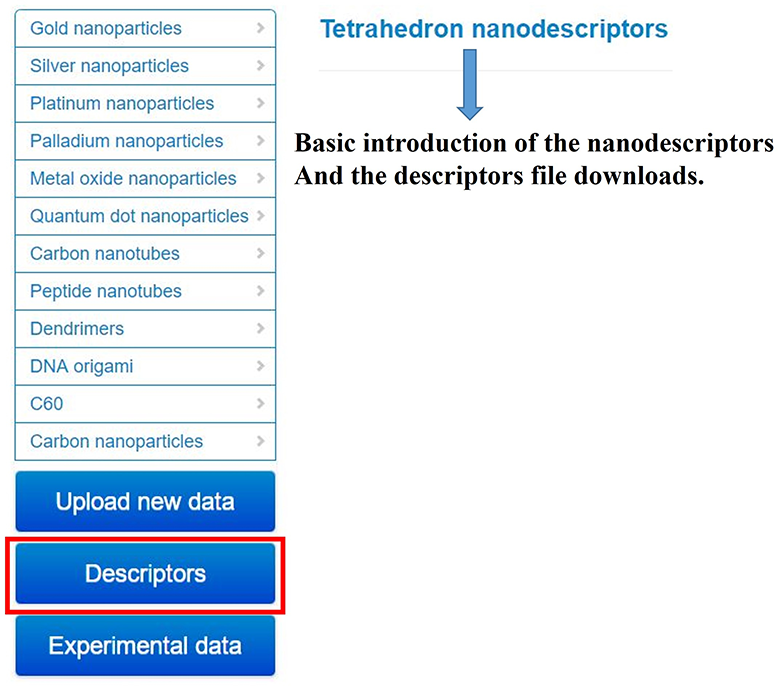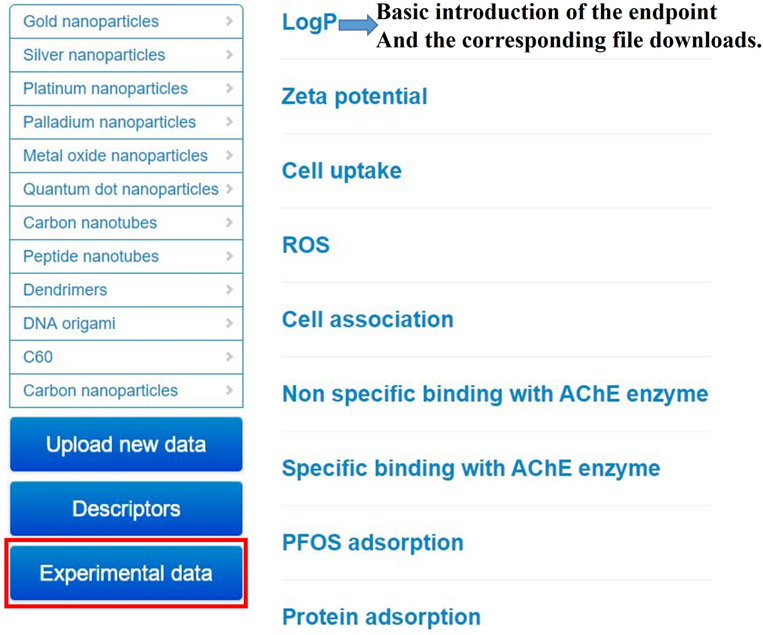Tutorial
The tutorial introduces PubVINAS in four parts.

-
I. Nanostructure visualization and PDB file downloads.
-
Figure 2. PDB file visualization and downloads.As shown in the first part of Figure 1, each category (e.g., gold nanoparticles) indicates the nanomaterial type. To visualize this gold nanoparticle, please click the “Gold nanoparticle” category. Then the index of the nanoparticle, as shown in Figure 2, was shown to give further selecting options for individual nanoparticles. While clicking the index (e.g., GNP1) of the nanoparticle, the basic information (e.g., the file size and reference) will be shown and the PDB file can be downloaded. When clicking the “Image” or “To view” button, the screenshot of the nanostructure can be viewed or the nanostructure can be formed virtually online. Here, we suggest to download the corresponding PDB file and visualize the nanostructure through common chemical software (i.e., VMD, MOE and PyMOL) in local computers if the internet speed is limited.II. Upload new data.


-
Figure 3. The function of uploading new data.The database can be updated through uploading new data by users. Users can share their own data (e.g., new nanomaterials synthesized and/or tested against new bioassays) by uploading them as a text file, excel file or PDB file. After reviewing the upload files, the system administrator will add the new data to the nanomaterial database.III. Descriptors.
-
Figure 4. Nanodescriptors file downloads.After clicking the “Descriptors” button, the basic introduction of the “Tetrahedron nanodescriptors” will be shown and the descriptors file, which contained the 2,142 nanodescriptor results for 705 nanomaterials, can be downloaded for modeling purpose.IV. Experimental data.

Figure 5. Nanodescriptors file downloads.
After clicking the “Experimental data” button, the basic introduction of the endpoints and experimental protocols will be shown and the corresponding file, which contained nanoparticle index, experimental data, standard deviations, controls and experimental protocols, can be downloaded.
